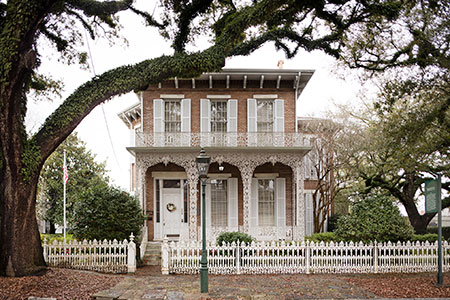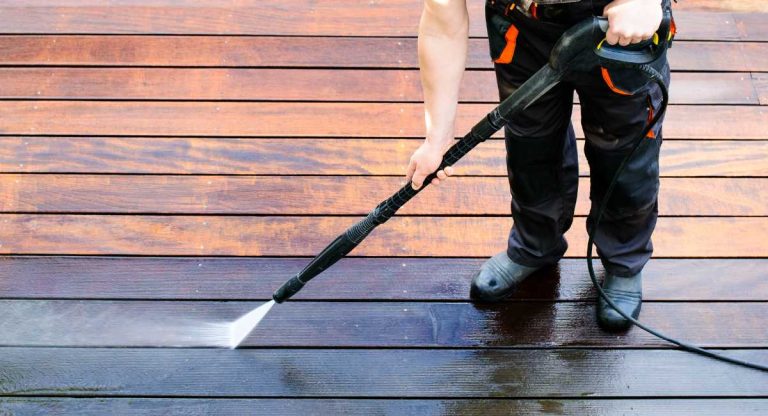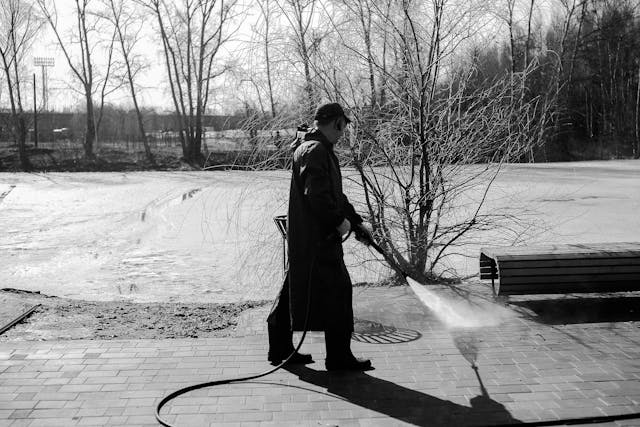
Historic homes and buildings come with unique charm — and unique challenges. While regular maintenance is essential for preserving these treasures, power washing a historic property requires extra care, expertise, and planning.
If you’re considering hiring a power washing service for a historic home, church, or commercial building, this guide will walk you through everything you need to know. 🕰️💧
🏠 Why Historic Properties Require Special Attention
Unlike modern buildings, older structures often feature:
- Delicate materials like aged brick, stone, mortar, or wood
- Original architectural features that could be damaged by high pressure
- Historic paint, coatings, or finishes that are irreplaceable
- Strict preservation standards governed by local or national historic societies
Traditional power washing — especially when done without care — can cause permanent damage to these elements. That’s why specialized methods and experienced technicians are crucial.
🚫 The Risks of Using the Wrong Power Washing Approach
Here are just a few examples of what can go wrong if a power washing company doesn’t understand how to treat a historic property:
- 💔 Mortar damage: High-pressure washing can blast away crumbling mortar, especially on brick buildings that are 75+ years old.
- 🪵 Wood rot acceleration: Improper washing can force water into old wooden siding, leading to mold or rot.
- 🎨 Paint loss: Historic paint — especially if lead-based — can flake or strip off entirely.
- 🧱 Cracking stone or stucco: Delicate or porous materials can erode, crack, or absorb water.
Once this type of damage is done, restoration can be extremely expensive — and in some cases, impossible.
🧽 What to Look for in a Power Washing Company
If you’re trusting someone with your historic property, you need more than just a good Yelp rating. Here’s what to look for:
✅ Experience with Historic Buildings
Ask directly: “Have you worked on historic homes or landmarks before?” Reputable contractors should be able to show photos, references, or case studies.
✅ Low-Pressure (Soft Wash) Methods
Soft washing uses low-pressure water combined with eco-friendly detergents to gently clean surfaces without force. This is the gold standard for historic properties.
Browse Amazon Here For Soft Washing Equipment And Accessories
✅ Custom Assessment & Plan
No two buildings are alike — and that’s especially true with older ones. The contractor should walk the property and create a custom plan based on materials, condition, and preservation requirements.
✅ Knowledge of Historic Guidelines
If your home is on a historic registry or within a designated preservation district, make sure the contractor understands local compliance requirements.
🧼 Which Surfaces Can Be Safely Power Washed?
With the right equipment and approach, many surfaces on a historic property can be safely cleaned:
- Aged brick or stone (with soft wash and proper angle control)
- Wood siding or trim (gentle nozzle and proper detergents)
- Wrought iron railings
- Historic concrete or pavers
- Stucco (with caution)
Some surfaces, however, should be avoided altogether — or require manual scrubbing or hand cleaning, such as:
- Lead-based paint
- Intricate wood carvings or decorative details
- Loose masonry
- Fragile chimneys
A good company will explain which areas they recommend washing — and which they’ll avoid for safety. 🧠
🧾 Questions to Ask Before Hiring
Don’t be shy — these are the questions you absolutely should ask a potential power washing company:
- “Do you use soft washing or adjustable pressure techniques?”
- “Can I see examples of similar historic properties you’ve serviced?”
- “What cleaning solutions do you use, and are they safe for older materials?”
- “Do you carry liability insurance specific to historic properties?”
- “What is your plan if something is accidentally damaged?”
A legitimate, experienced provider will welcome these questions and offer clear answers.
📸 Document Everything
Before any work begins, take detailed photos of the property from all angles. This includes:
- Paint condition
- Brickwork
- Window sills
- Rooflines
- Decorative trim
These photos serve as important before-and-after documentation, especially if you need to file a claim or request a re-clean.
Some companies even provide their own photography service as part of their standard process. That’s a good sign they’re used to working with sensitive properties. 📷
🌿 Use Eco-Friendly Products Whenever Possible
Older buildings tend to have more porous materials, which means harsh chemicals can soak in and cause long-term harm. Ask your contractor if they use:
- Biodegradable detergents
- pH-neutral solutions
- Low-residue products
This protects not only your building but also nearby vegetation and historic landscaping. 🌼
🤝 Final Thoughts
Preserving a historic property is a labor of love — and power washing, when done correctly, can be a valuable part of your maintenance plan. The key is to hire the right company with the knowledge, tools, and respect for your structure’s age and fragility.
By asking the right questions, documenting the process, and prioritizing soft, eco-friendly methods, you’ll protect the charm and integrity of your property for years to come. 🕰️✨
Browse Amazon Here For Top Rated Power Washers And Accessories






